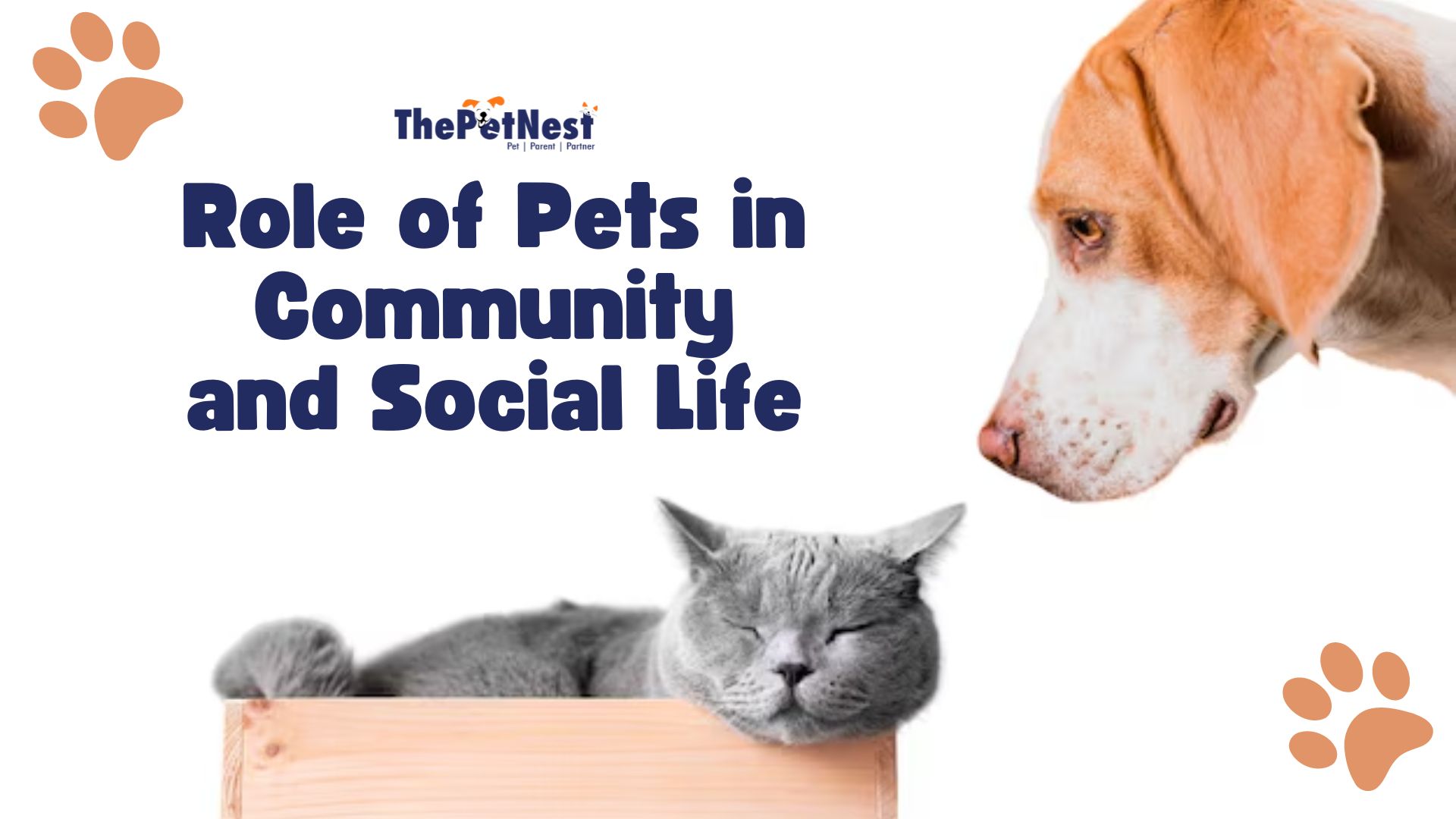Role of Pets in Community and Social Life
Pets have long been cherished companions in human societies, providing not only emotional support but also playing significant roles in the fabric of community and social life. From fostering connections among neighbors to serving as therapeutic agents in various settings, pets enrich our lives in numerous ways. This blog explores the multifaceted roles of pets in community and social life, highlighting their contributions to fostering social bonds, enhancing mental well-being, and creating inclusive communities.
Pets as Social Catalysts
1. Fostering Connections
Pets, especially dogs, are natural icebreakers. Walking a dog in the neighborhood often leads to spontaneous interactions with fellow pet owners and passersby. These casual encounters can evolve into meaningful relationships, fostering a sense of community and belonging. Dog parks and pet-friendly events further provide opportunities for socializing, where pet owners can share experiences and tips, strengthening community ties.
2. Bridging Social Gaps
Pets have a unique ability to bridge social gaps and bring together people from diverse backgrounds. Regardless of age, ethnicity, or social status, the shared love for animals creates a common ground for interaction. This inclusivity can be particularly beneficial in urban environments, where social isolation is a growing concern.
Pets and Mental Well-being
1. Reducing Stress and Anxiety
The presence of pets has been shown to reduce stress and anxiety levels. Interacting with animals can trigger the release of oxytocin, a hormone associated with bonding and relaxation. This calming effect is why therapy animals are increasingly used in hospitals, schools, and nursing homes to provide emotional support and alleviate stress.
2. Enhancing Mood and Combatting Loneliness
Pets offer unconditional love and companionship, which can significantly enhance mood and combat feelings of loneliness. For individuals living alone, pets provide a sense of purpose and routine, helping to stave off depression and loneliness. The simple act of petting a dog or cat can release endorphins, boosting overall happiness.
Pets in Community Services
1. Therapy and Support Animals
Therapy and support animals play a crucial role in various community services. They visit hospitals, schools, and nursing homes, providing comfort and companionship to patients, students, and elderly residents. These animals help reduce stress, encourage social interaction, and even aid in physical rehabilitation exercises.
2. Service Animals
Service animals, particularly dogs, are trained to assist individuals with disabilities, enhancing their independence and quality of life. These animals perform tasks such as guiding visually impaired individuals, alerting those with hearing impairments, and providing support for individuals with mobility challenges. Their presence in the community not only supports their handlers but also raises awareness about disabilities and inclusivity.
Pets and Community Health
1. Encouraging Physical Activity
Owning a pet, especially a dog, encourages regular physical activity. Daily walks, playtime, and outdoor activities with pets promote a healthier lifestyle for pet owners. This increased activity level can lead to better cardiovascular health, weight management, and overall physical fitness.
2. Building Safe and Active Communities
Pet-friendly initiatives such as dog parks, walking trails, and community pet events promote active lifestyles and enhance public spaces. These initiatives encourage residents to spend more time outdoors, fostering a safer and more vibrant community environment. The presence of pets in public spaces can also deter crime and promote a sense of security.
Pets and Education
1. Teaching Responsibility and Empathy
Caring for pets teaches children responsibility, empathy, and compassion. Feeding, grooming, and tending to a pet's needs instill a sense of duty and care. Schools and community programs often incorporate pet care activities to educate children about animal welfare and the importance of responsible pet ownership.
2. Enhancing Learning Environments
Classroom pets or visiting therapy animals can enhance learning environments by reducing stress and increasing student engagement. Interacting with animals can improve focus, reduce anxiety before exams, and create a more positive and stimulating learning atmosphere.
Conclusion
Pets play an indispensable role in community and social life, offering countless benefits that extend beyond companionship. They foster social connections, enhance mental well-being, support community services, encourage physical activity, and contribute to education. As society continues to recognize the profound impact of pets, it is essential to create pet-friendly communities that welcome and celebrate the presence of animals. By doing so, we not only enrich our own lives but also build stronger, more connected, and inclusive communities.
Whether it's the joyful bark of a dog, the soothing purr of a cat, or the gentle nudge of a therapy animal, pets remind us of the simple yet profound ways in which they touch our hearts and improve our lives.




Comments
New Comment